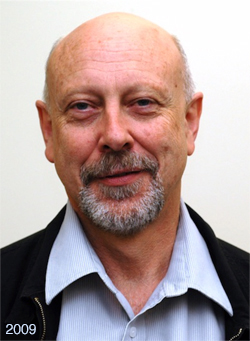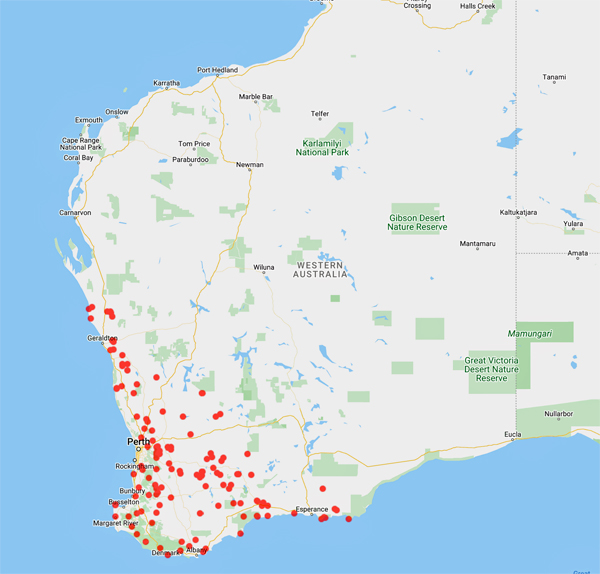
Council of Heads of Australasian Herbaria
Australian National Herbarium
Biographical Notes
 |
Council of Heads of Australasian Herbaria |
 Coates, David Jack (1953 - )
Coates, David Jack (1953 - )Born: 1953;
Since early childhood david-eldridge had a keen interest in wildlife. A fascination from his school years with aquatic life and maintaining aquariums is a passion held to the current day. As a child, he read numerous books on nature and wildlife and was fascinated by wildlife biologists and their conservation work.
He graduated from the University of Western Australia in 1973 in Zoology and Botany determined to pursue a career in biology but unsure where to start. His genetics lecturer was an inspiration to him and he moved into the fields of genetics, evolutionary biology and botany, working through Honours and then a PhD on chromosome variation and patterns of speciation in triggerplants, genus Stylidium. This work started his interest in plant conservation, taking field trips through south-west Western Australia with its remarkable plant species richness and many issues associated with habitat loss and vegetation change.
In 1979, he moved to the Australian National University and took up a position as senior tutor teaching genetics in the then Department of Botany. The following year he was appointed a postdoc at ANU with David Shaw. His research with David, on chromosome evolution and speciation in a grasshopper species complex, involved fieldwork from Victoria to Cape York Peninsula. His interest continued in the association between evolutionary biology and conservation.
He moved back to Western Australia in 1985 for a research position in conservation genetics and plant biology in the newly established Department of CALM. This was not only another great challenge but also a hugely rewarding part of his career.
He coordinated the establishment of Australia's first threatened flora ex-situ seed storage facility, developed area-based management plans and commenced a translocation program for threatened plants.
He expanded his interests in population biology and ecology to better understand small population processes and their interaction with threats such as habitat fragmentation and disease.
His current project in the Threatened Species Recovery Hub allows him to combine his interest in conservation genetics with plant translocations, a key goal being to develop success criteria for establishing viable translocated populations.
Source: Extracted from:
https://www.nespthreatenedspecies.edu.au/news-and-media/latest-news/david-coates-a-dedication-to-australia-s-plantlife
https://library.dbca.wa.gov.au/static/FullTextFiles/015870.pdf
Portrait Photo: 2009, M.Fagg (APII dig.41339).
Data from 169 specimens
